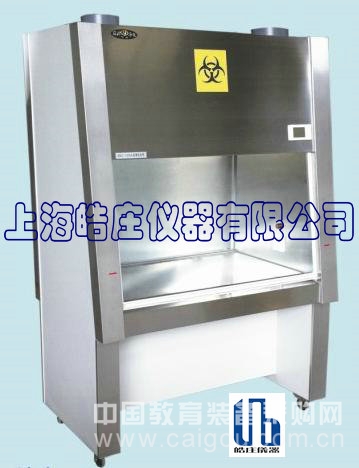
Using a biological safety cabinet is essential for ensuring the protection of both the operator and the environment, especially when working with infectious agents or hazardous materials. Proper operation not only maintains the integrity of the experiment but also prevents contamination and exposure. Here’s a detailed guide on how to use a biosafety cabinet correctly:
1. Before starting any procedure, all necessary items should be placed inside the cabinet. This helps avoid unnecessary movements that could disrupt the laminar airflow. Additionally, it's important to wipe down surfaces with 75% alcohol before bringing items in to reduce the risk of contamination.
2. Turn on the fan and allow it to run for 5 to 10 minutes to ensure the air inside the cabinet is purified and the airflow is stable. When entering the cabinet, slowly extend your arms into the work area and wait at least one minute to let the airflow stabilize before beginning your work.
3. Only essential items should be placed in the biosafety cabinet. Organize the contents into three zones: clean, semi-contaminated, and contaminated. Make sure these areas do not overlap and that items are positioned as far back as possible without blocking the air intake. This ensures proper airflow and minimizes the risk of cross-contamination.
4. Always perform tasks from the clean area toward the contaminated area to prevent the spread of contaminants. To protect against spills, place a disinfectant-soaked towel or gauze on the work surface, but never cover the cabinet’s grille, as this could interfere with airflow.
5. Avoid using open flames such as alcohol lamps inside the cabinet. The heat generated can disturb the airflow and potentially damage the HEPA filter, which is crucial for maintaining a safe working environment.
6. Minimize movement behind the work area and quickly close the door when opening it. Excessive movement or prolonged door openings can cause instability in the airflow, increasing the risk of contamination.
7. Never open the glass window during operation, and always keep your face above the work zone. Perform actions gently to avoid disrupting the airflow, which is critical for maintaining a sterile environment.
8. Regular testing and maintenance of the biosafety cabinet are vital to ensure its continued effectiveness. If any issues are detected, stop the operation immediately, take necessary precautions, and report the problem to the appropriate personnel.
9. After completing the experiment, close the glass window and let the fan run for an additional 10 to 15 minutes to clear the air. Then, turn on the UV lamp for 30 minutes for sterilization. Make sure to turn off the audio system during UV exposure, as UV light can be harmful to human health. Always wear protective gear when using UV light.
10. Clean and disinfect the cabinet regularly. After each session, wipe down the interior with 2% sodium hypochlorite (such as 84 disinfectant) and follow up with UV sterilization. The exterior should be wiped daily with 1% 84 disinfectant to maintain hygiene standards.
11. All materials used within the cabinet should be removed only after they have been properly disinfected. This prevents the accidental release of pathogens into the surrounding environment and ensures a safe lab environment.
By following these guidelines, you can maximize the safety and efficiency of your work in the biosafety cabinet. Always stay attentive, follow protocols, and prioritize safety at every step of the process.
NINGBO MACEY EDUCATION PRODUCT CO.,LTD , https://www.maceycreative.com